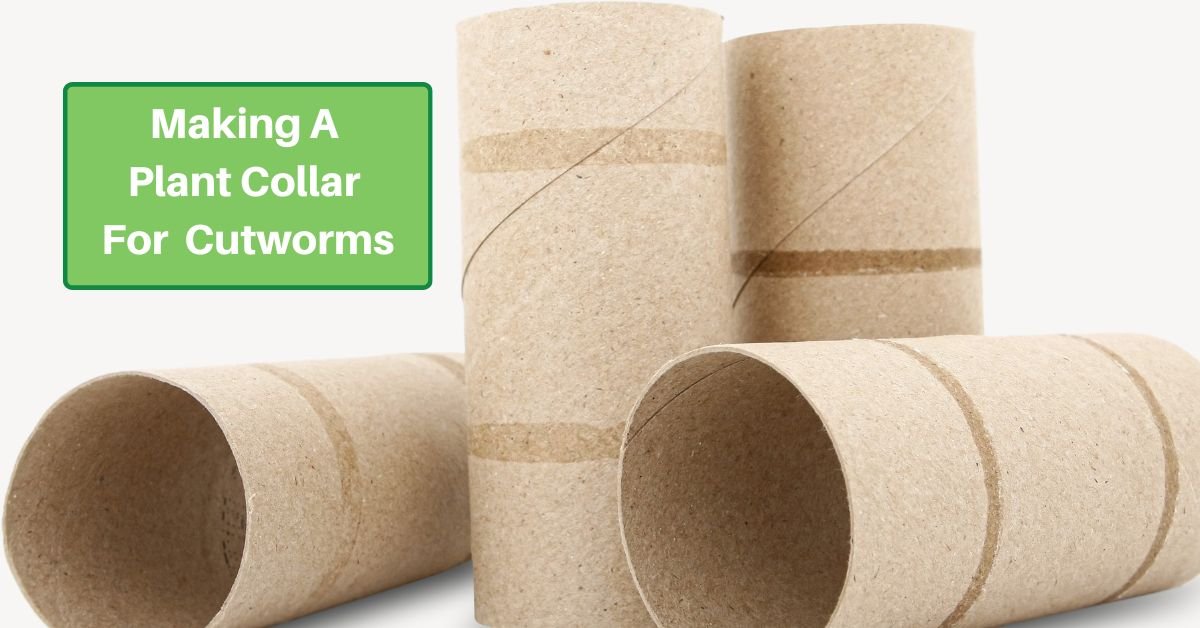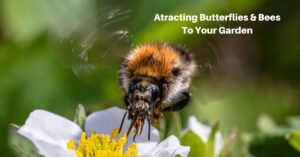Sometimes, it’s the small, hidden pests that are the biggest enemies of your garden. Cutworms and cabbage root maggots can be a major threat but you may not even notice them. However, the damage they cause to roots and stems is devastating! Fortunately, there are some simple steps you can take that will only cost you a little time. At the same time, you can recycle some common household waste!
Cutworms are the larvae of various types of moths. Cabbage root maggots are also larvae, but they mature into flies. Both of these critters love to feed on the stems of seedlings. Normally, the damage takes place around ground level, although some kinds of cutworms will climb higher and damage leaves as well.
How A Cutworm Collar Could Save Your Plants
Fortunately, it’s not hard to keep these larvae at bay. A simple shield is enough to discourage them from dining on your plants.
Since they generally stick to the lowest part of the stem, they don’t bother climbing very much. So if they encounter a barrier, it’s unlikely they’ll try to scale it, no matter what delicacy is on the other side!
Creating a tiny wall that is planted just an inch into the ground and rising three to four inches above ground level will do the trick. You could buy plant collars like this, but it’s just as easy – and much less expensive – to make one yourself!
How To Place A Cutworm Collar
The easiest way to place a plant collar is to start as early as possible. However, you also want to be sure your seedling gets enough sunlight to thrive. If the plant is still under four inches tall, the collar might leave it in perpetual shadow!
However, if you’ve started the seedlings inside, they’re probably ready for a collar as soon as you transplant them. Otherwise, be sure to let them sprout and grow a little first.
The collar is a tube. It should be two to three inches in diameter to allow for air circulation and space for the lower leaves. At this size, it should slide easily over the young plant.
Press the collar into the ground so that our hungry little enemies can’t crawl under it. If you’re using a softer material like thin cardboard, you may have to dig out a little dirt first, then pack the dirt around the tube to hold it in place.
And there you have it! As quickly as that, you’ve been able to protect a plant from destruction by cabbage maggots and cutworms.
Possible Materials
Almost anything that is, or can be shaped into, a small tube can make a great cutworm collar. Let’s look at a few choices. One of the greatest things about any of these is that you don’t have to spend anything extra on them. You’d probably throw them away otherwise!
Cardboard
Cardboard comes in many forms, sizes, and weights. And almost any of them can easily be used as a plant collar.
A flat piece of cardboard – maybe the kind that comes inside certain dress shirts to help them hold their form in the store – can be cut into sections about 5 inches by 7 inches and then rolled into a 5-inch-high tube that’s over 2 inches in diameter, with enough left over to staple it into shape.
Heavier cardboard can be handled the same way, although if it’s corrugated, you may have to crush it in spots so that it rolls smoothly.
But there are many pre-made cardboard tubes around the house, too! Toilet paper or paper towel tubes serve the purpose well; they just might need to be cut down a little.
Poster tubes and mail tubes are great, too, and more sturdy.
So you can put all those cardboard tubes to good use! Since cardboard also breaks down quickly, you don’t have to worry about cleaning it up later. On the other hand, it’s going to break down quickly and might not even make it through the whole growing season!
Plastic
Pieces of plastic pipe or other plastic containers also do the job. Even old water bottles – which abound in many of our homes – are perfect.
You can cut the top and bottom off a bottle or other container, leaving a tube. We recommend removing any labels, too, so they don’t peel off and leave litter in the garden.
Plastic is fantastic because it will last longer – you can collect them each fall and store them for next spring. It’s also inexpensive, but you probably have enough around that you can simply recycle what you already have at no additional cost.
The downside is that plastic isn’t biodegradable, so be sure to pick up any plastic plant collars after you’re done with them!
Metal
Metal is the most durable material for plant collars. Again, you don’t need to buy anything special. If you already have empty soda cans or vegetable cans, you’re off to a good start!
Vegetable cans are easy to prepare – just remove the bottom with your can opener, the same way you removed the top.
Aluminum cans take a little more work, but it’s not hard. You just need some cheap scissors and a utility knife. Be careful not to cut yourself, but you’ll quickly get the hang of cutting off the top and bottom. This video guides you on the basics, although you don’t have to do the side cut; just remove the top and bottom!
Metal isn’t biodegradable, so be sure to pick up your collars when you’re done with them. Clean them up and save them for next year!
You could also use aluminum foil to cover a cardboard tube; this will make it more durable and resistant to the elements.
Fabric
Fabrics like burlap or canvas also make good plant colors, although you still have to build some kind of frame to hold them in place. Because they aren’t rigid, they can be a little harder to work with.
Other Ways To Keep Cutworms Away
Plant collars aren’t the only way to keep your seedlings safe from these pests, though. Here are some other suggestions:
Attract Birds
Good gardening doesn’t always mean you want to keep birds away – some are great additions!
Some birds can be a curse to your garden. But others are a blessing! Those that eat pests fall into the latter category. Magpies are fond of cutworms. Ducks and chickens enjoy cabbage maggots.
Ground Beetles are another natural enemy of cutworms, and they won’t harm plants. If you see them, leave them be! They are a huge help around the garden.
Diatomaceous Earth
Diatomaceous earth is a great way to keep your garden safe. By adding it to your soil, you can reduce the population of many destructive pests. It’s an irritant that can even kill them. If you have pets, be sure to take proper precautions, as it can be a lung irritant if too much is used.
Keep The Area Clean
Both cutworms and cabbage maggots thrive when they have plenty of places to hide. So keeping your garden clean and free of debris helps keep them – and other problematic creatures – away. A little care goes a long way!
Cutworms and cabbage maggots may be major pests, but it doesn’t take a major effort to control them. It may not even cost you any extra money! You can recycle many household products to create plant collars. With just a few simple steps, you’ll help your garden prosper and reduce waste, all at the same time!









